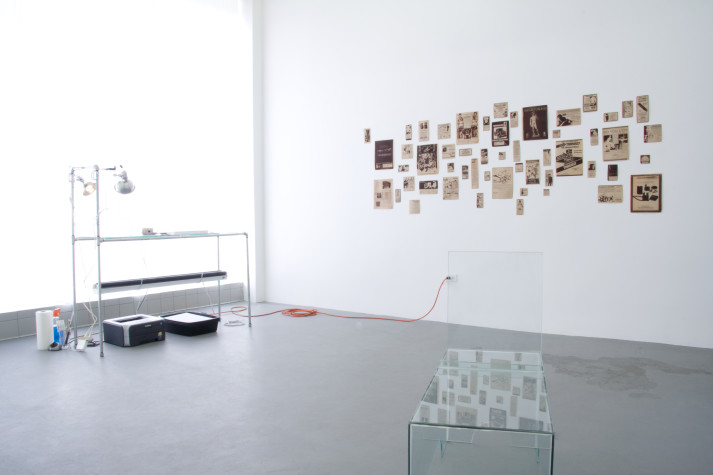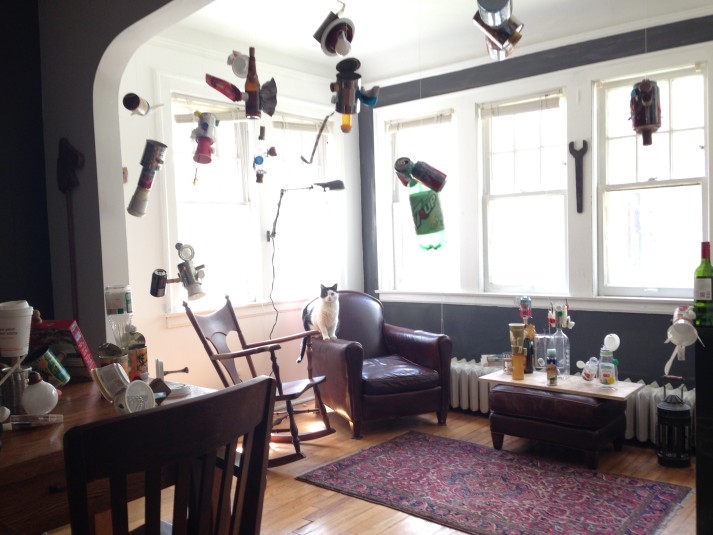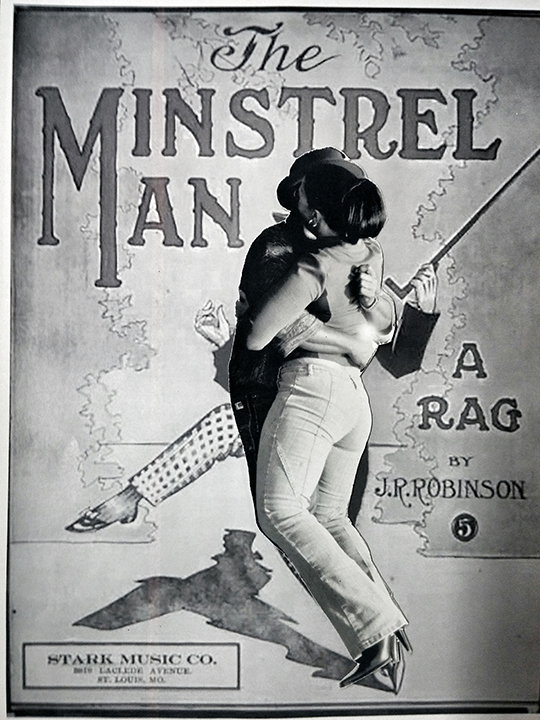In July of 2015 Tina Kukielski visited Chicago as an Art & Dialogue curator in residence. During her stay, Kukielski delivered a public program at Threewalls, and visited the studios of 10 Artadia Awardees. The following is an account of her stay.
Years before I would ever visit the grand city–as an adolescent–the vision of Chicago that I had in my head was one of the stockyards of Upton Sinclair’s The Jungle: blood oozing through the streets, toiling workers, and miserly slumlords. The image quickly vanished as we rolled up to the hipster hotel, the Acme on East Ohio, where I would be staying. Just a few blocks away was my favorite Chicago modernist landmark: the Marina City towers. There is something about those tubular corncob columns overlooking the sinewy Chicago river that screams of the utopian promise of a different jungle–the reinforced concrete jungle–signaled by postwar modernist architecture. Sinclair’s wasteland would be a distant past–at least from where I sat in the now stylish and commercialized River North.

Danny Orendorff, a curator at Threewalls, a non-profit exhibition space and residency focused on local artists, was my enthusiastic and gentle guide through the gridded city. We started north at the home-studio of artist John Neff, nestled in the tree-lined streets 30 blocks north of Wrigley Field. John, like a number of the artists I would see in their studios, had attended my talk at Threewalls the night before. This led to a series of illuminating conversations throughout the weekend about curatorial practice and exhibition methodology, and how to think para-institutionally. John was a formidable interlocutor and he shared with me some of his own curatorial and archival projects, many of which were based in pedagogical and collaborative models. In 2011, John resurrected the nearly lost archive of artist Robert Blanchon who had died in 1999 of AIDS-related causes, showing parts of Blanchon’s oeuvre alongside a body of his own photographs that echoed the elder artist’s ephemeral printing process.

John Neff Prints Robert Blanchon, 2011, installation views, Golden Gallery Inc.
As we stood making coffee in his kitchen, assemblages of found objects lined the walls floor to ceiling, a charming collection amassed during several years John spent moonlighting in thrift stores and salvage yards. I was reminded of the old idiom: one man’s trash is another man’s treasure.

John Neff’s apartment collection
This sentiment became a welcome thematic for the forgotten or overlooked, a position that seemed to recur throughout my itinerary, evident in Deb Sokolow‘s hilarious schematic drawings involving entertaining and twisting tales of conspiracy theories or her late uncle’s relationship to a young Lee Harvey Oswald.

Deb Sokolow, Chapter 13. Oswald and Your Cousin Irving, 2013, acrylic, graphite, charcoal, tape, collage on paper mounted to three panels
And by different measures manifest too in Cecil McDonald Jr.‘s illuminating and inspiring collagist delves into the musical scores of early 20th century African American performers and musicians while working in a large studio in residence at the Chicago Cultural Center and Public Library in the heart of Chicago’s loop.

Cecil Mcdonald, Jr., Cuts and Beat, PhotoMontage, 2015, series, size varies , 2015
The impulse to retell a revisionist history was challenged further by artist Jason Lazarus’ own archival programs. His Too Hard to Keep photo blog designed as a kind of reliquary for once personal pictures now deemed too difficult to look at, or keep, would come up later in my summer when looking at photo blogs with some of my MFA students. THTK had reached a critical mass of followers and Jason had newly sent, hand-packaged submissions lying around the studio. There, in the developing Lower West Side a short cab ride from Shane Campbell’s gleaming new space on South Wabash, Lazarus was also in the process of finishing a work to be shown in the debut exhibition at SF MoMA’s grand reopening: a collection of photographs plucked from flea markets, but without their subjects evident nor exactly revealed.

Jason Lazarus, studio detail, 2015, research for installation of At Sea, to debut at SFMOMA, spring 2016
Instead the backs of the printed paper were turned toward the viewer, showing only hand-written captions in the beautiful script of another era. What the images were of, what they looked like, and from where they came would be left to our imagination.
All the driving around Chicago eventually made me carsick (my stomach is much weaker since moving back to New York), but Danny–my humble sherpa–dosed me with Dramamine and let me curl up in his backseat. I retreated back to my hotel to recover, found a snack next door at Eataly, and once rested made my way to the last gasp of the opening day celebrations of The Freedom Principle: Experiments in Art and Music, 1965 to Now at the MCA Chicago. There I ran into my friend, the critic and art historian Solveig Nelson and we too gabbed about the old and new, revisionist histories and our plans for the future.
– Tina Kukielski






